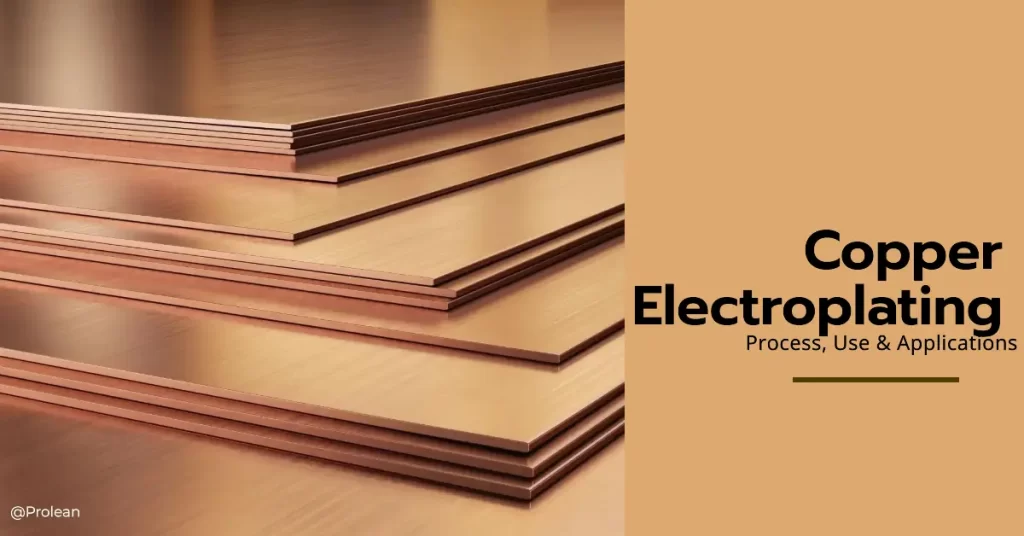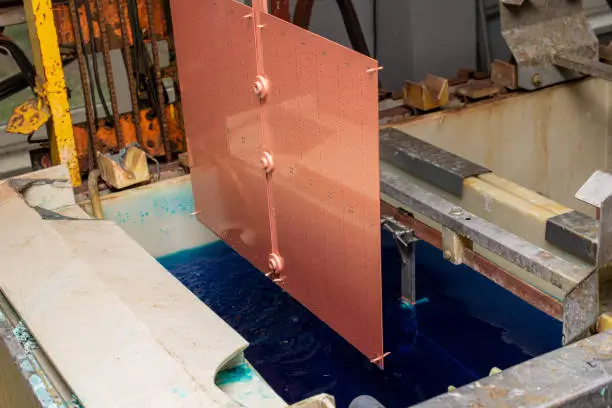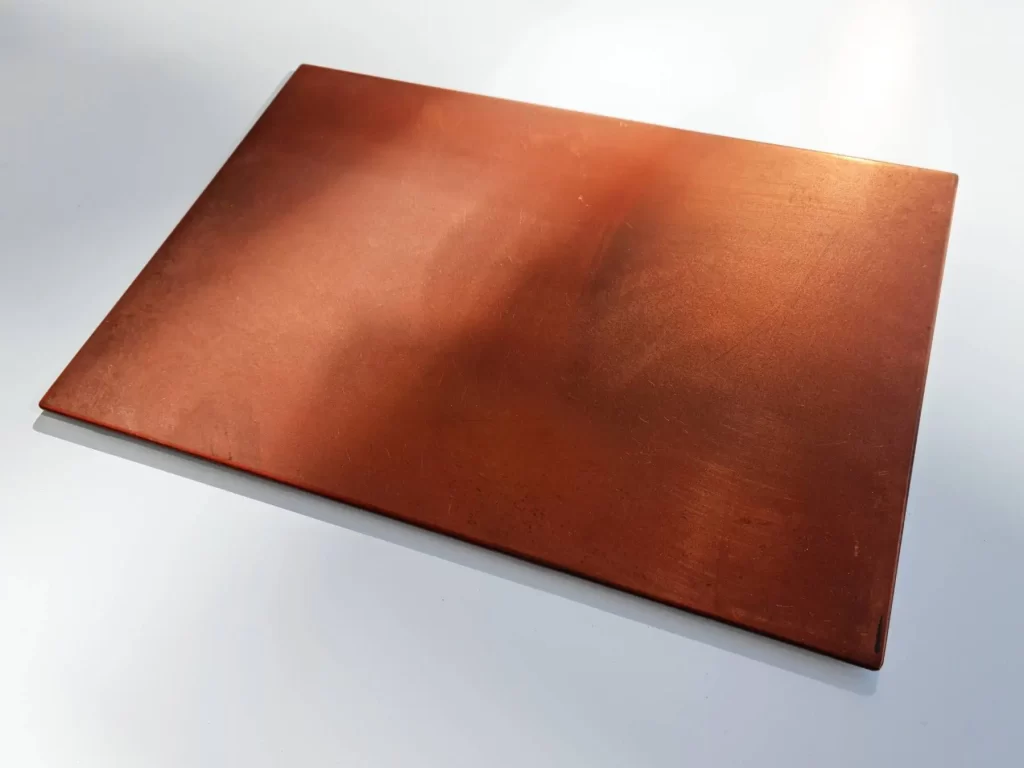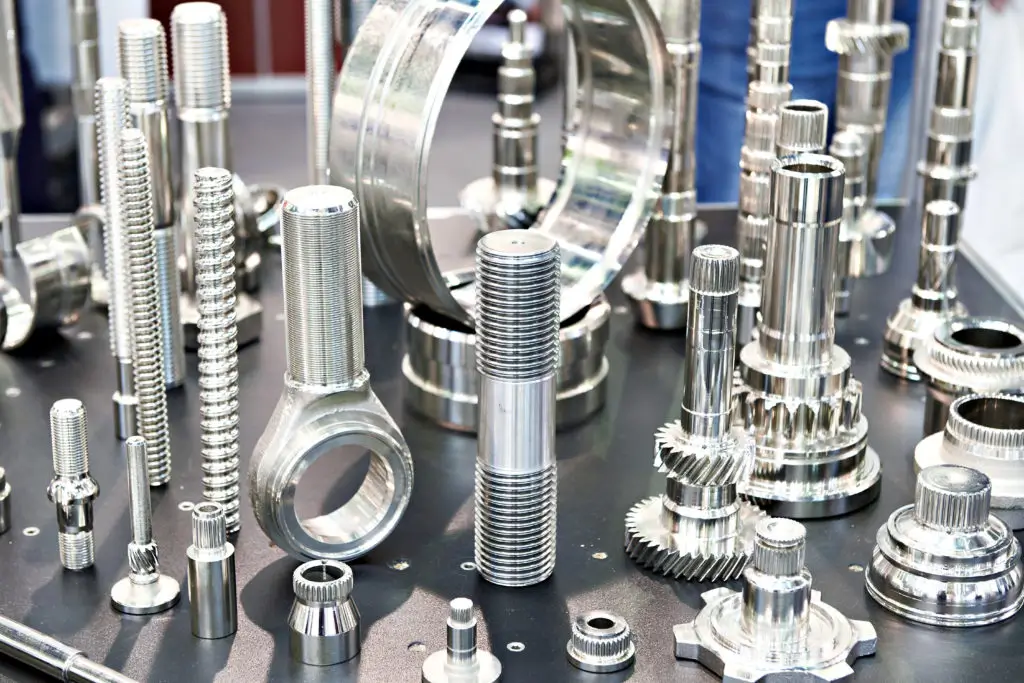
Do you ever wonder how shiny metal surfaces get that perfect finish or how metals are protected against corrosion and wear? One process that makes all this possible is copper electroplating. It is a technique commonly used in many industries as a layer of copper coating on some metal object. But what exactly is copper electroplating, and why is it such an essential product in many industrial applications?
What is Copper Electroplating?
Copper electroplating is one of the surface finishing techniques. It is applied to metals with a relatively thin layer of copper by placing it on the surface. This method of plating is an electrolytic one because it uses electrical applications to drive the chemical process.
In simple words, an object is simply dipped into a copper electroplating solution, and then electric current flows. The copper ions dissolved in the solution would move in opposite directions due to their attraction to the object to form a very thin layer that is both smooth and protective. Improvement in its appearance is the factor that gives corrosion resistance and better conduction of electrons. Copper electroplating has widely been used in automotive and electronic manufacturing and their other fields of application.
Try Prolean Now!
Importance of Copper Protective Coating
Copper protective coating avoids corrosion and abrasion from getting in contact with the substrate metal and prolongs the life of the latter. Thus, it is ideal for harsh environment applications or any system where durability is paramount.
Surface preparation is central, so to ensure that the copper layer will adhere evenly and smoothly. That is where metal polishing comes into the equation. Smoothing out the surface before coating it with copper helps eliminate imperfections and allows for an ideal surface to which the copper can bond. Proper metal polishing ensures that the copper protective coating will be tough, and long-lasting.
How Does Electrolytic Plating Work?

Electrolytic plating
The electrochemical process makes up the very base of copper electroplating. A substrate is the term used to describe the object that is to be plated. It is submerged into the solution containing the copper ions in the electrolyte. With the passage of an electric current through the solution, positively charged copper ions are attracted to the substrate, hence allowing the bonding of copper atoms onto the object’s surface with the formation of a very thin and even coating.
It is as if giving a new skin to the metal thing, except that here the skin is protective as well as conductive!
Why Use Copper Coating?

Copper proactive coating
The following unique properties are considered the main reasons why copper is used for electroplating. Copper is highly conductive, which makes it so suitable for a very vast range of electric and electronic components. On top of all this, it’s also relatively cheap, thus corrosion-resistant, and can be polished easily. Therefore, it is the first choice for manufacturers to develop coatings to enhance performance and durability.
The benefits of coating with copper include:
Increased Conductivity: Copper is a good conductor material, so it forms a must material for electrical and electronic applications.
Resistance to Corrosion: This also means protection of the base metal from corrosion, so the component lives for a long time.
Enhanced Strength: Copper plating provides considerably large strength and hardness values to the base metal
Aesthetic Value: The bright, reddish-orange color of copper creates aesthetic value for the application.
But for that to happen, there needs to be a uniform and precise copper coating. For such procedures, surface finishing processes, including electrochemical polishing, are adopted.
The Role of Electrochemical Polishing in Copper Electroplating

Electrochemical polishing
Some pre-treatment will be required on the metal surface plated with copper. However, this electrochemical polishing is also known as electrolytic polishing. It requires pre-treatment in the form of polishing and cleaning the surface for better bonding with copper. This usually takes place after metallization is done to remove any remaining imperfections on the substrate’s surface.
Why is polishing important? One of the obvious reasons would be that a polished surface makes the copper perfectly adhere and ensures it provides uniformity. In case the surface is not well prepared for copper coating, the layer might not fit so well, therefore causing poor-quality finishing.
Copper Electroplating Solution
The electroplating process is dependent on the solution used. A typical copper electroplating solution includes copper salts, acids, and other agents that facilitate the process of transferring these copper ions to the metal surface for the electroplating.
The composition of the solution also may vary depending on the application. There are some solutions designed to give better adhesion, and there are others that have been made to improve the conductivity of the layer of copper. The choice of a specific solution would depend on the desired outcome: whether the resulting copper coating is intended for protection or for conducting in electronics.
Applications of Copper Coating
Copper electroplating is an indispensable process widely used in several industries. Now, let’s consider some common applications of copper electroplating.
Electronics: Copper has excellent conductivity. It is highly used in electronic elements such as PCBs, connectors, etc.
Automotive: In vehicles, copper plating is primarily used for decorative purposes and also for the prevention of corrosion within the vehicle’s engine and electrical parts.
Aerospace: Aerospace components typically require high endurance and are resistant to harsh environments, which copper electroplating offers.
Jewelry and Decorative Items: The beautiful finish of copper makes it a great material for decorative items and jewelry that can present attractive glossy and polished finishes.
For all these applications, surfacing finishing is the most critical. Good polishing ensures that the copper layer has an appeal and functions properly.
Surface Finishing Processes for Copper Coating
The final step of electroplating copper is surface finishing. Immediately after electroplating, hundreds and thousands of techniques can be used over the surface to get some specific texture and look.
Some of the popular finishing techniques include:
Electrochemical polishing: It smoothens and brightens the surface. It eliminates the imperfections.
Buffing and polishing: Hand or machine polishing techniques are applied. The gloss and shine of the layer of copper shall be enhanced.
Passivation: A chemical process that removes all the free iron present on the surface, thus further enhancing the corrosion resistance of the coating by copper.
Surface finishing is necessary to ensure uniform presentation, polished appearance, and sturdy copper coating layer. It is normally the last step in making premium metal parts.
Choosing the Right Copper Electroplating Service
If a firm offers for polishing service or is a supplier of electroplating copper, then it must be experienced in any surface finishing process. Indeed, copper electroplating requires fine details and precision in the work. Poorly applied copper may give different kinds of finishes, low adhesion strength, or even poor durability.
Before providing the service, you must ask for electrochemical polishing methods, copper electroplating solutions, and surface finishing technologies used. An experienced service provider will explain in detail how to provide a perfect, protective, and polished finish on copper!
Try Prolean Now!
Ready to Enhance Your Metal Components with Professional Copper Electroplating?
Do you require the perfect scratch-proof copper finish? Let our professional polishing services help you obtain it. As masters of precise electrochemical polishing and technologically advanced surface finishing methods, we ensure your copper coating provides protection and aesthetics!
Reach out to us today for the best copper electroplating solutions tailored to your industrial or decorative requirements.




0 Comments